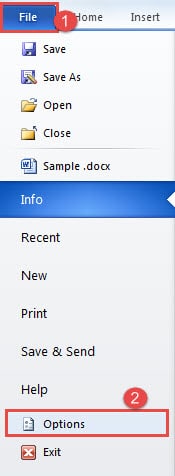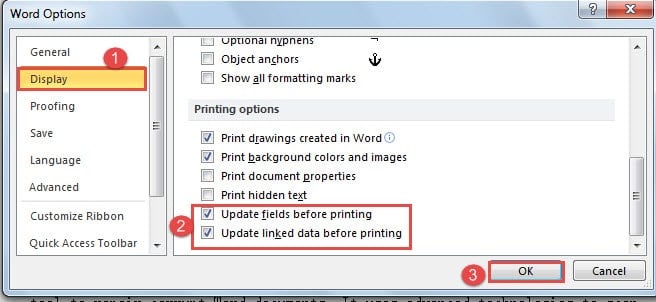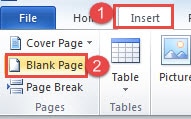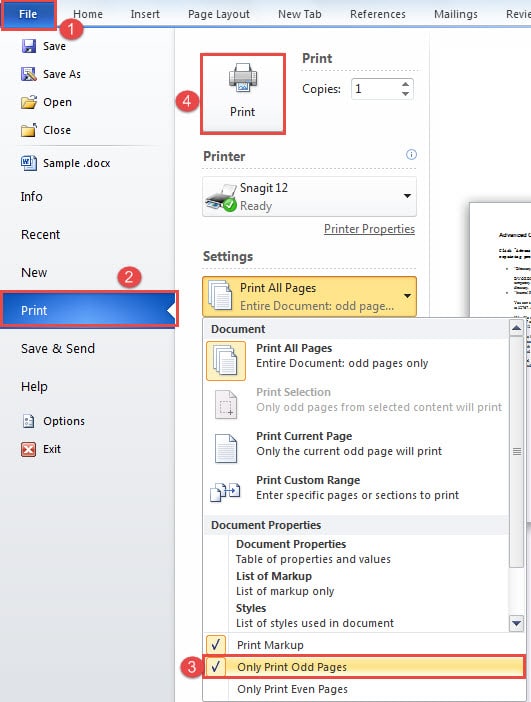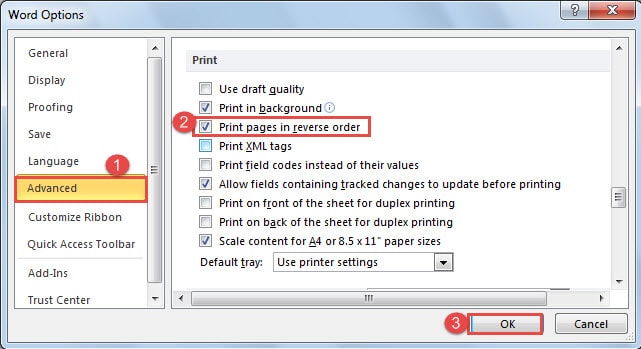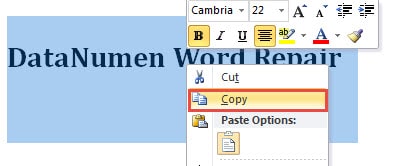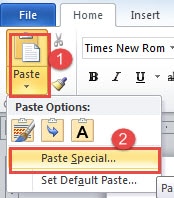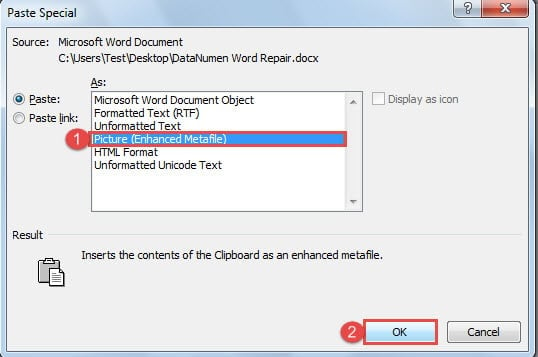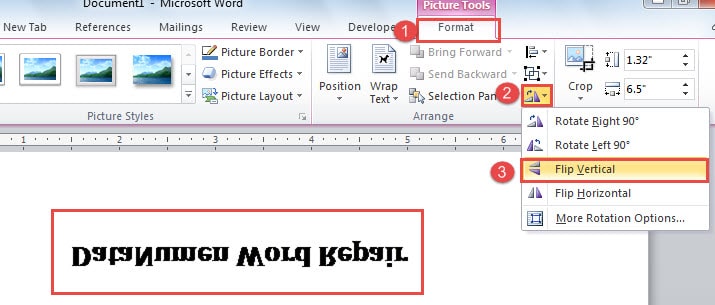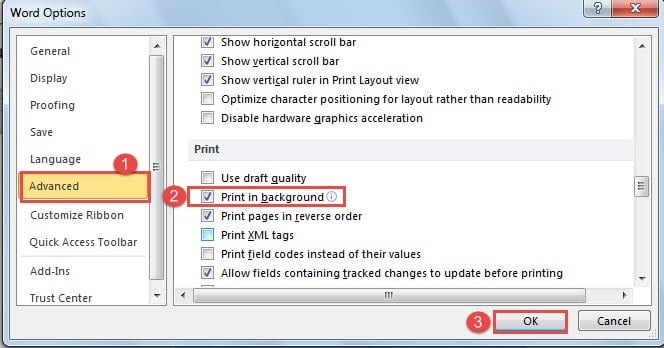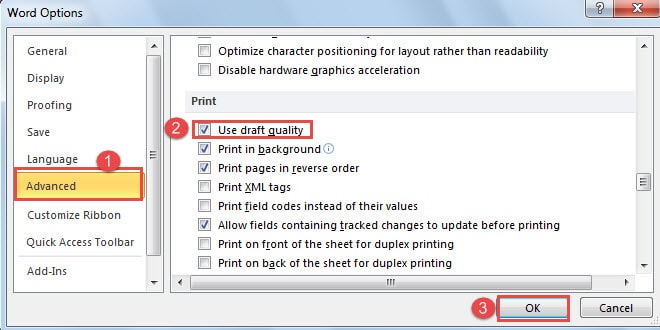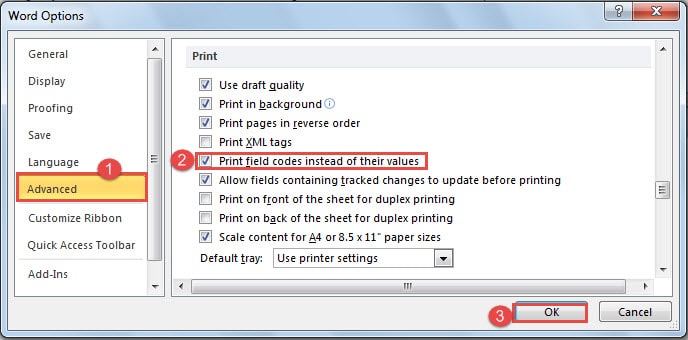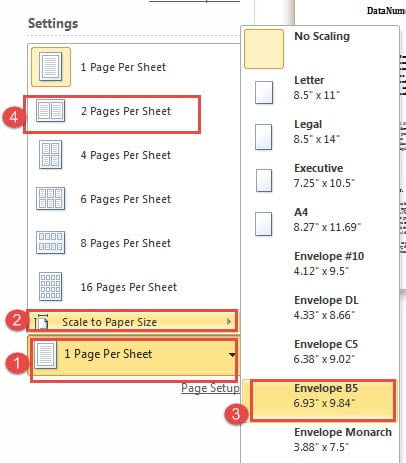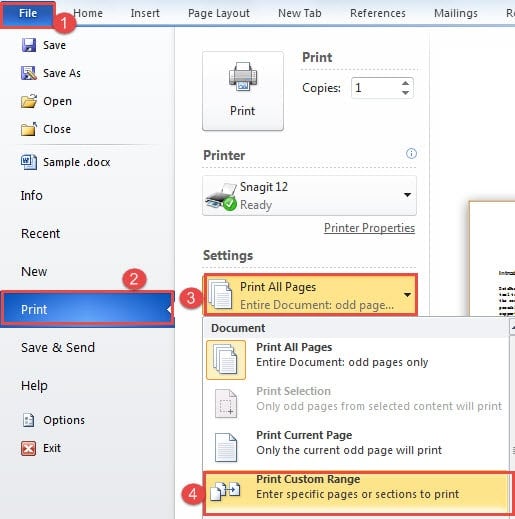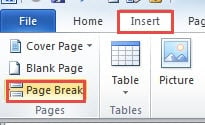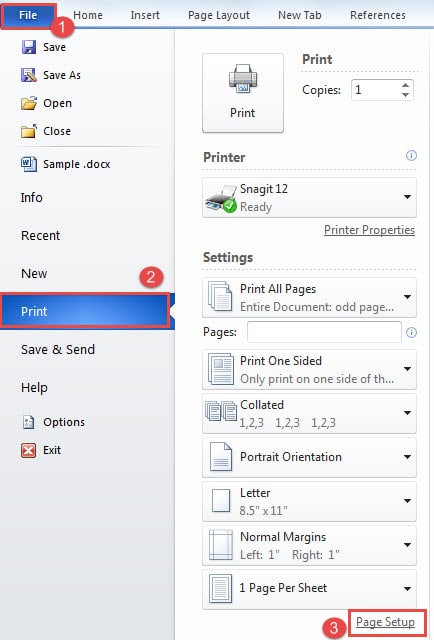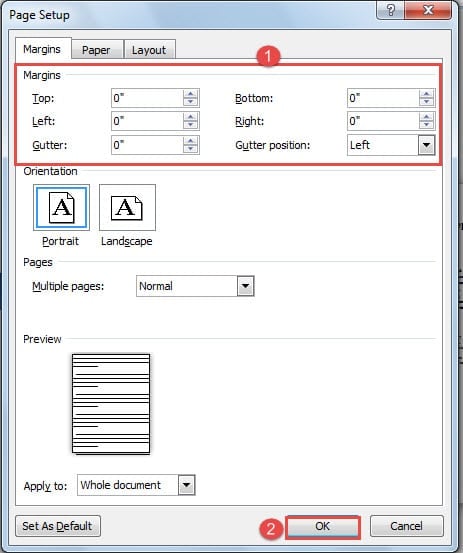There are 10 useful tips in this article to print your Word documents correctly and cost-effectively in 10 different situations.
Inevitably, you will have to print your Word file once you finish working on it. To print a document is not a rocket science, but how about doing it in an efficient and environment-friendly way? To name just a few, do you know how to correctly print on both sides manually? Moreover, do you know how to print a mirror image of your Word document?
Anyway, this article lists 10 varying print situations and their solutions as well. Read on and employ these tips to improve your work efficiency.
Tip 1: Automatically Update Fields and Linked Data before Printing
If your document contains fields or linked data, you must update them before printing. However, more often than not, you could just forget to update these fields manually, which could result in paper waste and business crisis even.
This is why you need to set the print options beforehand by taking the following steps:
- Firstly, click “File” tab.
- Then choose “Options”.
- Now in “Word Options” dialog box, first click “Display” on the left side.
- Then go to “Printing options” page and check “Update fields before printing” and “Update linked data before printing” boxes.
- Finally, click “OK” to save the change.
Tip 2: Print Correctly on Both Sides
Naturally, we will print on both sides as possible as we can to save paper and protect the environment. Yet, you may find your printer doesn’t support automatic duplex printing. Then things can get a little bit tricky. But fear not, you can address the issue by following the instructions below:
- To begin with, check the total number of pages in your document. If it’s an odd number, place your cursor at the end of the document. Then click “Insert” tab. Next go to click “Blank Page” to add a new page for your document. Certainly, if it is an even number, you can just skip the above operations.
- Then click “File” tab.
- Next, click “Print”.
- Choose “Only Print Odd Pages” in “Settings”.
- Click “Print”.
- Now turn over all the papers and make the blank side on the top. Put them back into the printer.
- Now there can be 2 situations according to different types of printer. If the blank side on the top is the opposite one of the first paper in document, you need to click “File”.
- Then click “Print”.
- This time choose “Only Print Even Pages” in “Settings”.
- If the blank side on the top is the opposite one of the last paper in document, you need to click “File”, then click “Options” to open “Word Options” dialog box.
- Next click “Advanced”.
- And check “Print pages in reverse order” box.
- Remember to click “OK”.
- Next repeat from step 7 to 9.
Tip 3: Print a Mirror Image of Word Document
Simply using Word and you can print a mirror image of your document.
- At beginning, select the text you need to print, and copy it.
- Second, open a new Word document. Click the drop-down button on “Paste” icon under “Home” tab.
- Then choose “Paste Special”.
- Now in “Paste Special” dialog box, choose “Picture (Enhanced Metafile)”.
- Then click “OK”. The text you paste will turn into a picture.
- Now click the picture to select it.
- Click “Format” under “Picture Tools”.
- Then click “Rotate” option.
- Next choose “Flip Vertical” on the drop-down menu.
Tip 4: Turn on Background Printing
Once you turn on background printing, you will be able to edit on the document while printing.
- Still, click “File” tab first.
- Then click “Options” to open “Word Options” dialog box.
- Next click “Advanced”.
- Then scroll down to “Print” page, and check “Print in background” box.
- Finally, click “OK”.
Tip 5: Print in Draft Quality
To print Word document in draft quality can not only reduce print cost but improve printing speed.
- Repeat the first 3 steps in tip 4.
- Only this time you should check “Use draft quality” box.
- Likely, click “OK”.
Tip 6: Print Field Codes
If your document includes field codes, Word will print the field values by default. However, there can be times when you need to print field codes instead of their values.
- Repeat the first 3 steps in tip 4.
- And this time simply checking “Print field codes instead if their values” box will be fine.
- Likewise, click “OK”.
Tip 7: Scale to Paper Size
Sometimes you may arrange all the content in a certain size of a paper, such as “A4”. And it’s not until the last moment when you are informed that you must print the document on another size of paper, like “B5”. What should you do then?
- You should click “File” first.
- Then click “Print”.
- Click the drop-down button on “1 Page Per Sheet”.
- Choose “Scale to Paper Size”.
- Then choose a new paper size on the extend menu, like “B5”.
- Next click the drop-down button on “1 Page Per Sheet” again, and this time choose “2 Pages Per Sheet”.
- Now you can go to print.
Tip 8: Print a Range of Document Pages
It happens quite often when we have a long document, we only need to print several pages of them.
- Similarly, click “File”.
- Then go to “Print”.
- Next click drop-down button on “Print All Pages”. And choose “Print Custom Range”.
- Then in the text box below, you input pages you want to print. For example, if the pages are in row, then you can enter the beginning and stopping page number and put a dash between them, such as “1-3”. This means you want to print page 1, 2 and 3.
- Otherwise, you should add a comma between each two numbers. For instance, if you want to print page 1 and page 3, you should enter “1, 3”.
Tip 9: Print only a Part of a Page Text
Chances are that you may only need to print a certain part of a page text. Under such circumstances, to create a new document would be time-consuming, and to print the whole page would be a waste.
- The best solution for this is to insert a page break. Place your cursor at the start of the text you need to print.
- Click “Insert” tab.
- Then click “Page Break”.
- Next put cursor at the end of the text, and click “Page Break” again.
- Then follow the steps in tip 8 to print the pages you need.
Tip 10: No Margins Print
By default, Word sets margin values. Yet sometimes, we just don’t need.
- Click “File”.
- Then click “print”.
- Next click “Page Setup”.
- Now in “Page Setup” dialog box, set all margin values as “0”.
- Then click “OK”.
Word Can be Vulnerable to Errors
Though we can always find out some hidden features of Word, it’s still prone to crashes. And this means our files are in danger all the time. The bad thing is Word can stop working all of a sudden, leaving us trapped with broken files. At this moment, you need a proficient tool to repair damaged Word data
Author Introduction:
Vera Chen is a data recovery expert in DataNumen, Inc., which is the world leader in data recovery technologies, including xlsx repair tool and pdf repair software products. For more information visit www.datanumen.com
